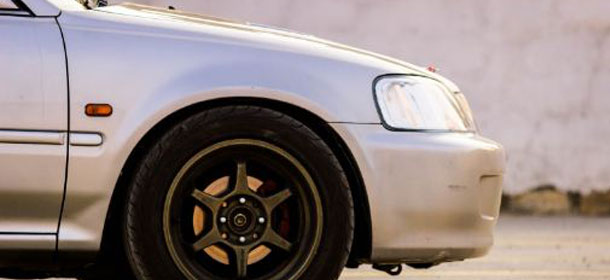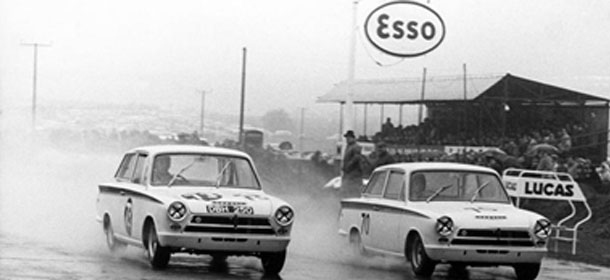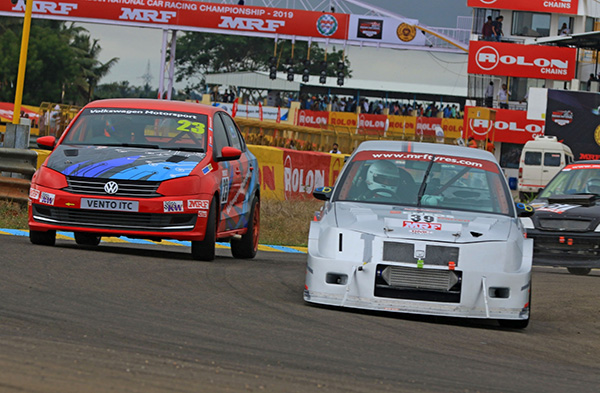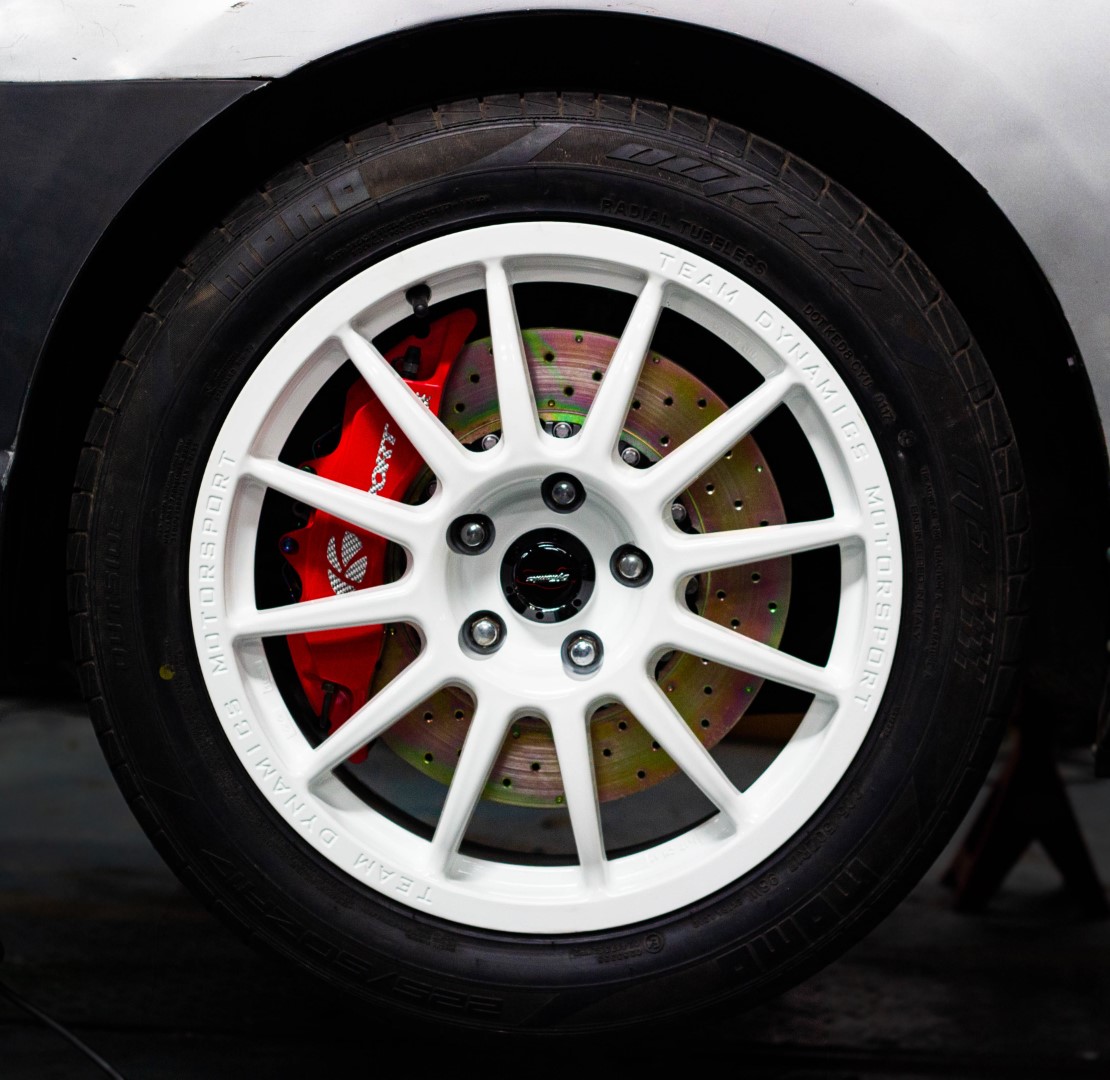
A pattern we’ve observed among enthusiasts is that there is a severe thirst for power, but not for braking capacity. The truth is, any car that has been modified for more power absolutely needs a brake upgrade. Think about it. If a car has 20% more power and the stock braking system isn’t upgraded to come to terms with that power increment, the car is simply not equipped to handle that power.
However, the benefits of a better performing braking system don’t just apply to modified cars. At the heart of it, brakes are a safety feature first and foremost and even a car that has minor or no modifications will benefit from performance brakes.
Here are the biggest issues with the braking system in a stock car and the suggested performance brake upgrades to overcome them:
1. The stock brake rotors are not designed to dissipate maximum heat
Certain performance models such as the Baleno RS come with disc brakes on all 4 wheels but even in those situations, the rotors don’t have sufficient heat venting. They are also limited further by their size. Now, obviously, a bigger brake rotor leads to more surface area and increases braking capacity. But, the reasons for installing drilled and vented rotors aren’t as obvious:
Any set of brake pads are designed to work ideally at a certain range of temperature. As you go beyond this ideal temperature, the coefficient of friction comes down, meaning you need to apply much more force to achieve the same stopping power. In addition, certain brake pads release a gas due to the excess heat, causing a jacket of air between the rotor and the pad, thus resulting in brake fade.
The solution:
Drilled and vented brake rotors.
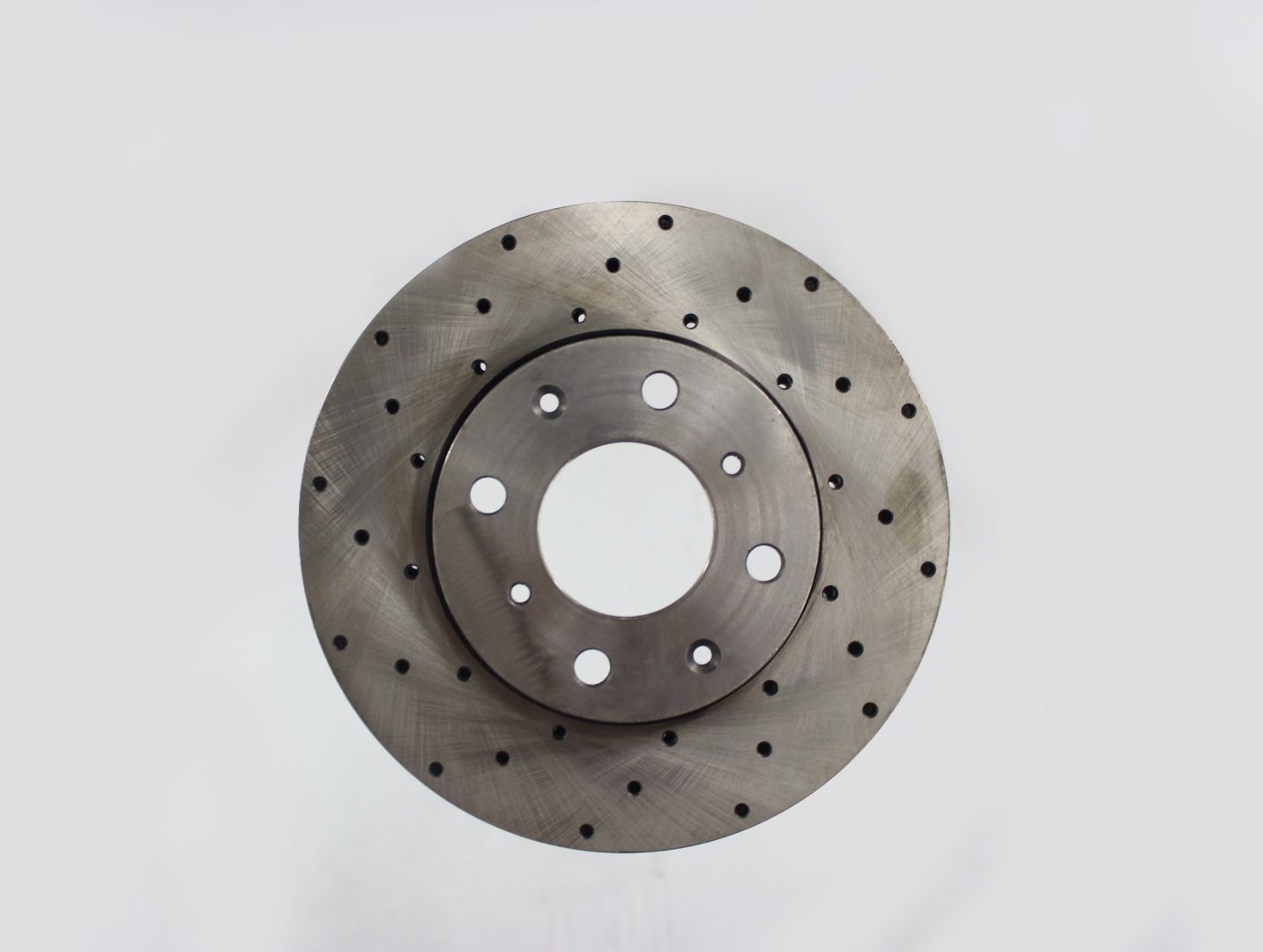
While the repercussions could be bad, the solution is actually simpler than you would think. By upgrading the stock rotors to a drilled and vented rotor of the same diameter or to a larger diameter in case of higher power levels, the braking performance can be increased drastically. The airflow of a drilled and vented brake rotor enables the brake assembly to operate at a temperature that is much closer to its ideal temperature.
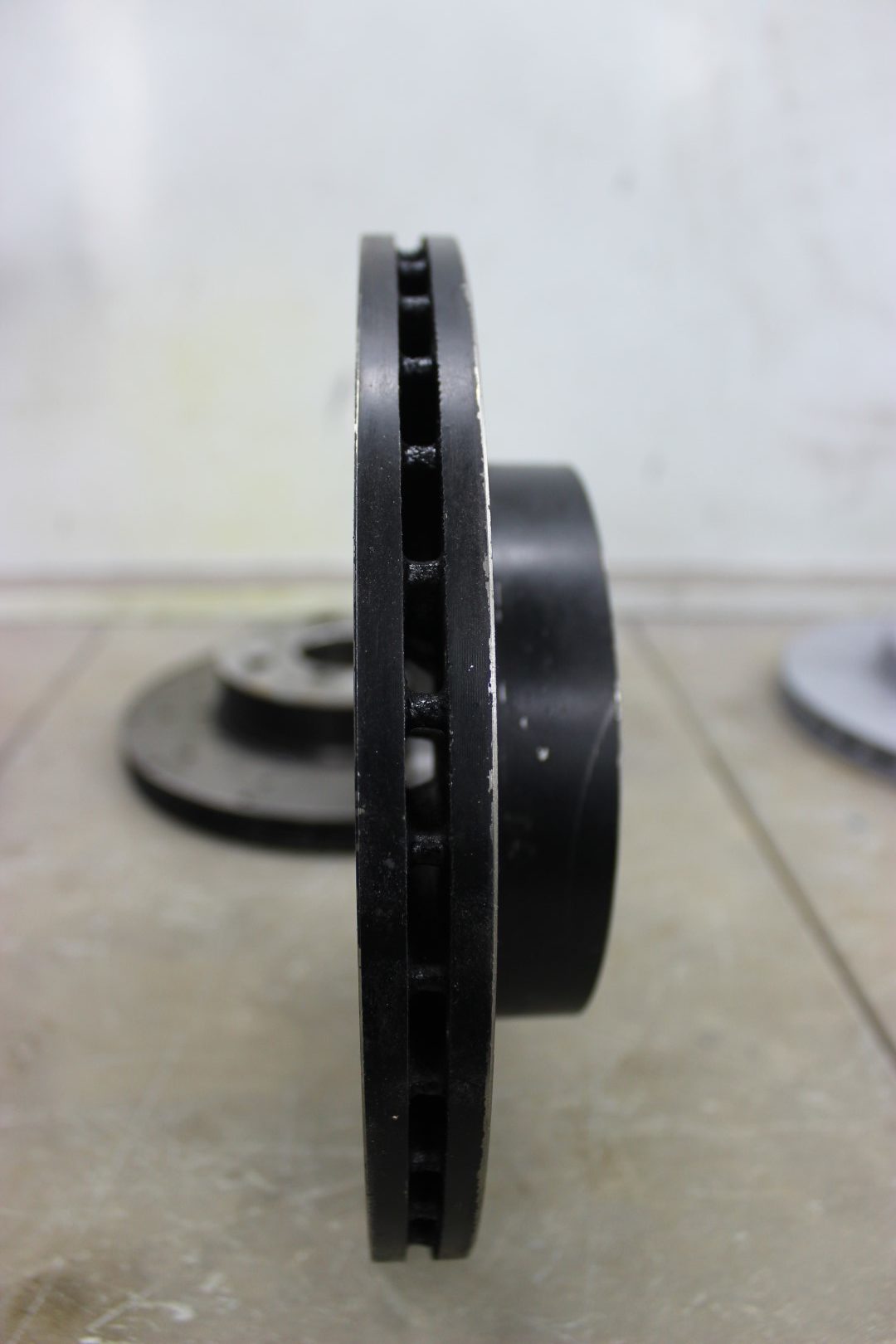
Further, any gases that arise from the friction between the pad and rotor is easily pushed out through the vents, leading to much better braking performance.
2. Stock Brake Pads compromise on performance
The primary goal of manufacturing stock brake pads is simple: achieve a certain level of braking performance at lower as well as moderately high temperatures. The problem with this approach is that it leads to a compromise in braking performance, just to make sure that the pads operate above a minimum standard in a wider range of temperatures. Besides everything else, the OEM pads are built to cost – which means compromises massively in terms of outright braking performance.
The solution:
Performance Brake Pads

The philosophy behind performance brake pads is simple: they are created to maximize braking performance for specific use cases. Rather than making a brake pad that offers a minimum level of performance in a wide range of temperatures and compromised for cost, performance brake pads guarantee maximum performance in a specific range of temperatures. Accordingly, a street car would benefit from employing a set of brake pads that offer good performance at a lower temperature, whereas you would need brake pads that stay consistent at much higher temperatures for racing, spirited driving, and other purposes that demand intensive braking such as regular hill descents.
3. Stock Brake Lines are prone to failure
Although stock rubber brake lines have come a long way from the old days, they still aren’t the ideal solution. Rocks and other debris shooting up from the ground can tamper the rubber covering, potentially causing brake failure. Further, the stock brake lines don’t give you the best pedal feel because as the pressure goes up on the pedal, the rubber brake lines bulge – reducing both pedal feel and braking power.
The solution:
Steel braided brake lines

Steel braided brake lines are built to be durable and heavy-duty. They have a strong core responsible for carrying brake fluid. This core has a protective layer around it. A stainless steel pipe surrounds this assembly and a braided protective layer encases the entire brake line. Given how the core is much more rigid, the brake pipes do not bulge, resulting in a much better pedal feel. Further, the brake lines are much more resilient to debris and rocks due to their construction.
4. The stock master cylinder isn’t designed for performance
Braking systems are typically hydraulic, with the brake fluid that is located in the master cylinder being responsible for translating the driver’s input on the brake pedal to the calipers. However, most cars have a master cylinder that comes with some obvious limitations. This is primarily because the pressure that the brake fluid places on the calipers is a function of the size of the piston in the master cylinder.
The solution:
Performance Master Cylinders

A Performance Master Cylinder has a larger piston, and hence, it pushes out more brake fluid towards the calipers, resulting in better braking performance. A counterpoint could be made, that since the piston is larger, a larger effort is required to generate the same brake pressure. However, thanks to modified lever positions, you can get the same braking performance with even lesser effort compared to stock braking systems. Further, the cylinder is made from tough, heavy-duty materials.
All of these factors make performance master cylinders one of the simplest, most straightforward ways to increase braking performance.
5. Stock brakes aren’t suitable for high-powered builds
When a car is modified beyond its initial identity, then the brakes need to evolve with the change as well. For example, if a Honda City VTEC is modified from its initial state of 100bhp to 200bhp+, then changing just the rotors, brake lines, and pads simply aren’t enough to keep up with the power upgrade. Such cases demand a more holistic braking solution.
The Solution:
Big Brake Kits
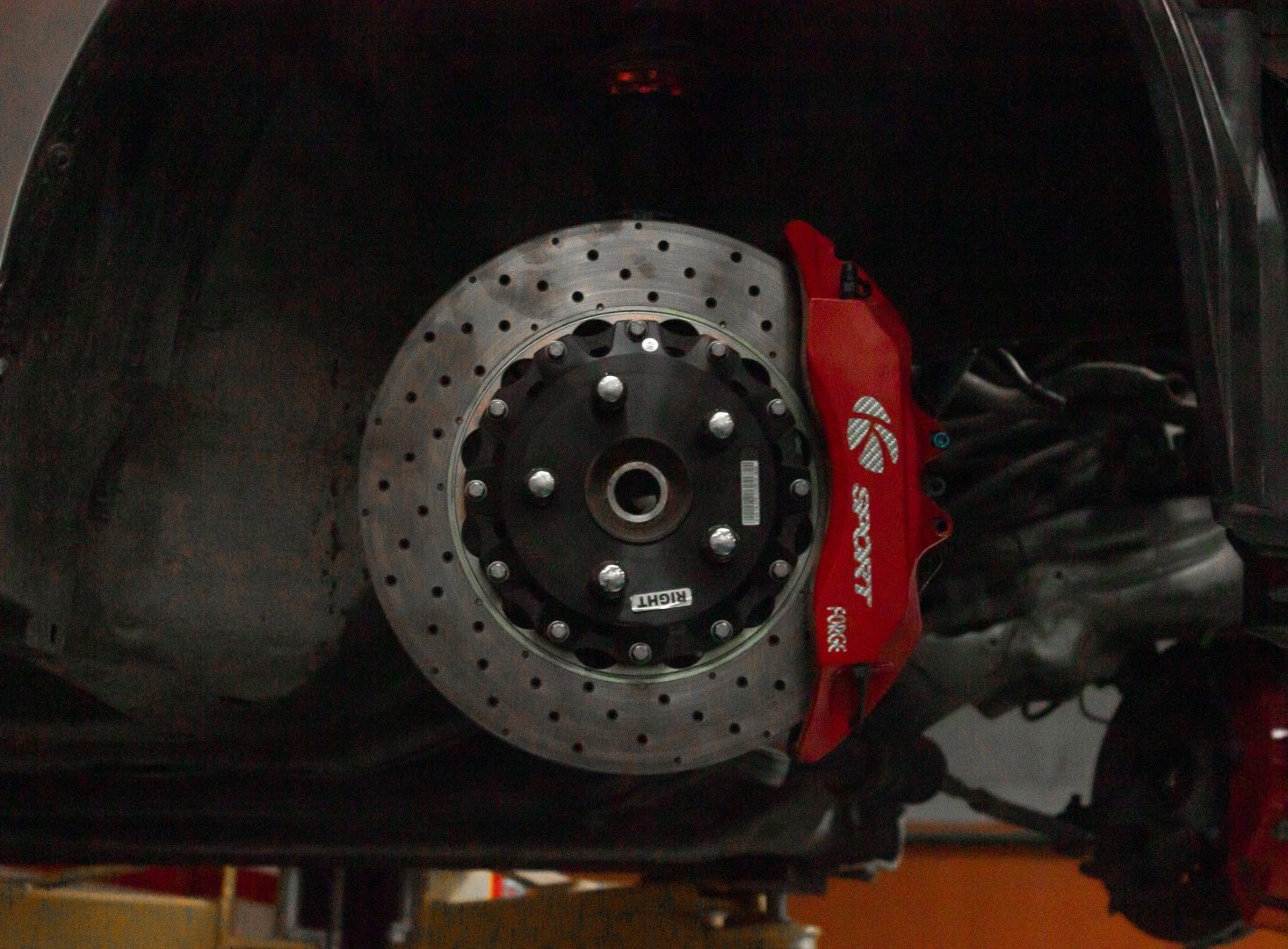
When a car is unrecognizably more powerful than its stock form, it calls for a big brake kit. Essentially, a big brake kit is an all-in-one package that comes with the works: performance rotors, bigger pads, matching calipers (in red of course), steel brake lines, and so on. Thanks to our association with some of the world’s leading aftermarket brands, we are able to offer the very best big brake kits to some of our most powerful modified cars.
—
In addition to the above points, we feel it’s important to mention that every car is designed differently. And very often, aftermarket parts have to be manufactured specifically for each model. Given how this is the case, it isn’t hard to believe that certain upgrades, such as upgrading rear drum brakes to disc brakes for example, simply can’t be done for all cars. The best practice for enthusiasts is always to talk to us on what is possible and what isn’t before planning an upgrade.
To sum up, it’s clear that there are numerous aftermarket performance braking solutions. There isn’t a one-size-fits-all solution, and it really all depends on the application and the demands that it places on your brakes. However, increasing a car’s braking performance has become far more affordable today than ever before. And while it could get confusing at times to truly understand what kind of braking system your car needs, we can always help guide your decision.
Race Concepts translates its racing R&D to premium performance upgrades to customers. We bring to you the best materials available and use only trusted brands for master cylinders, brake lines, calipers, rotors, and pads. Interested in a brake upgrade?

